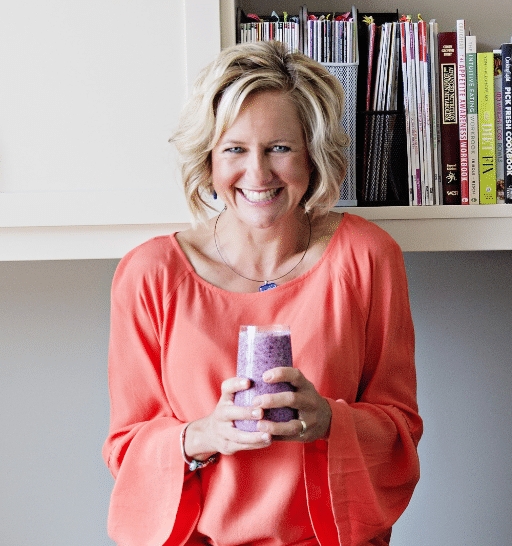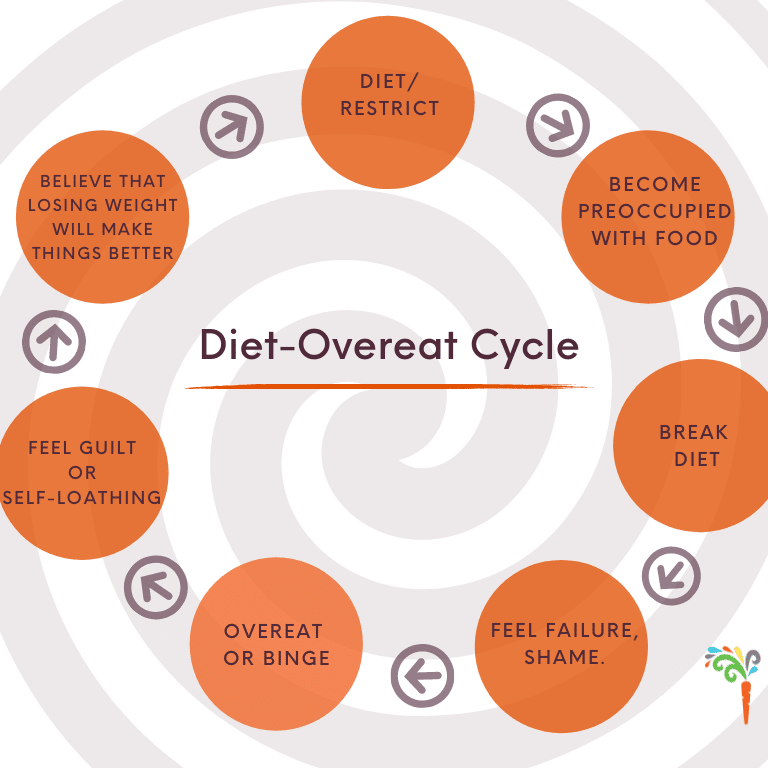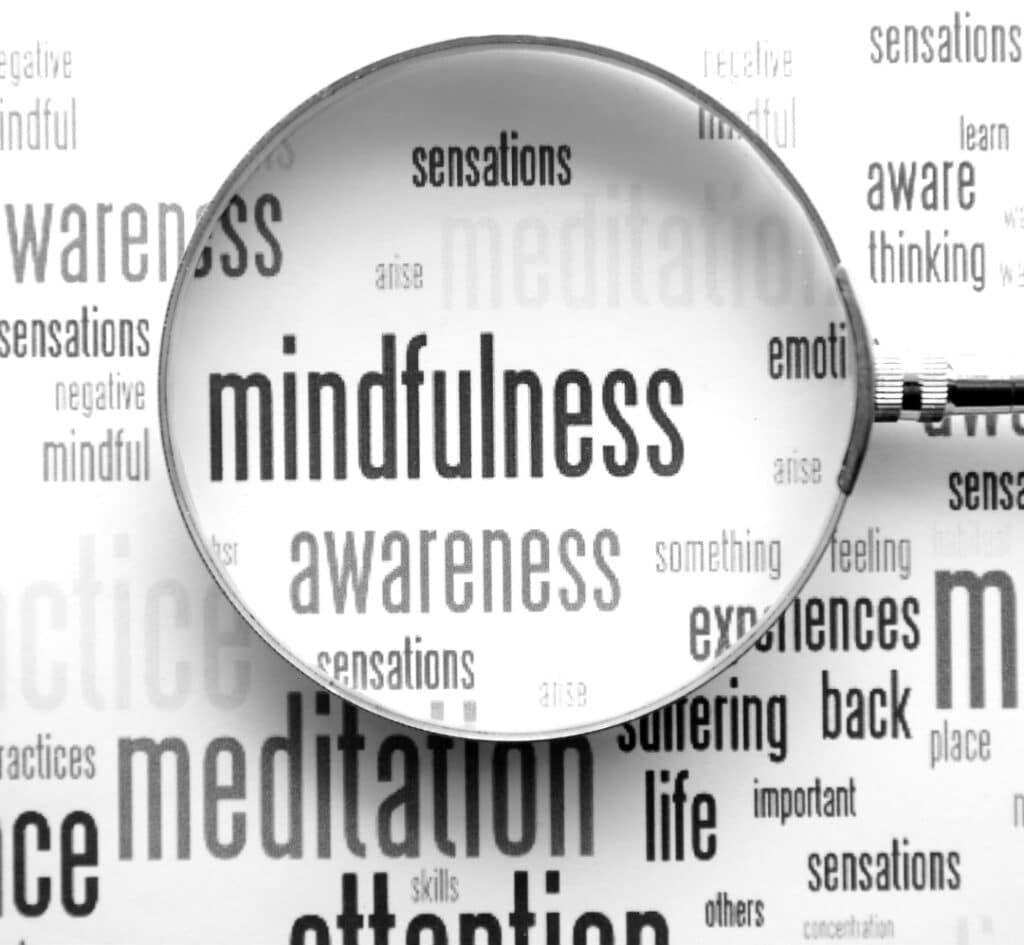What is mindfulness? Why you want to learn this skill & How to get started
Are you hearing more about mindfulness and mindful eating? Who doesn’t want to learn to enjoy food more and break the habit of constant mindless snacking? But the thought of having to put in hours of time to practice into an abstract practice was a definite no for me. Little did I know, mindfulness is a relatively simple task, requiring small bouts of awareness that eventually (with continued practice) give way to more connected eating habits.
In this post, we outline:
- What is mindfulness
- Why does mindfulness matter?
- What does mindfulness have to do with eating?
- How to develop the skill of mindfulness
Mindfulness: A Definition
The concept of ‘mindfulness’ has been around for thousands of years – but has really gained popularity in recent years. Mindfulness refers to the practice of ‘paying attention in a particular way: on purpose, in the present moment, and without judgement’ (Kabat-Zinn, 1994, p.4). It is a skill that can be learned.
Essentially, the idea of mindfulness is to allow thoughts and feelings to be noticed, acknowledged, and accepted without judging the content of the thoughts. Mindfulness is about being in the present moment and noticing what is happening, without attachment to what we notice. It is awareness with kindness.
Mindfulness contrasts with what occurs when we are not focused on the present moment, when our minds wander, daydream, plan, ruminate, fester, fantasize and allow us to act automatically, mindlessly and mechanically while our thoughts are centered elsewhere.
How can mindfulness help you?
Mindfulness can help reduce your suffering. Mindfulness has been applied as a strategy to help people in the many areas they struggle, including stress, sleep, depression, anxiety, addictions, eating, disordered eating and more.
With practicing mindfulness, you can notice and be with your own thoughts, feelings and sensations, without engaging with them, as this engagement is what brings us suffering. Instead, you let them pass by, just like clouds in a sky, or cars on a highway. Coming back to your breath (or using other mindfulness practices) helps to steady your mind.
Mindfulness helps you develop the ability to objectively observe your moment-to-moment experience with kindness. You can watch your own experience from a third-person stance. It is not about “being good” at mindfulness. It is not about having a certain kind of experience; it is about noticing the experience that you are having and doing so with kindness.
So what does mindfulness really mean? What does it have to do with eating?
Let’s explore what mindless eating is first, as I’d guess it’s a topic many of us are more familiar with (no judgement here, it’s something I’m very familiar with too!). I’d bet that almost everyone reading this has partaken in mindless eating at some point, even if you don’t quite know it.
- Ever gone in for a handful and chips just because you saw them sitting on the counter?
- Even started to eat a few chips and before you know it the bag is empty without you even realizing it?
- Ever had a deadline and find yourself foraging in the cupboard for a snack?
- Ever had a long day and find yourself lying on the couch with a bag of candy?
Yeah, me too, and that is what we call mindless eating. Some call this distracted eating.**
** As you relate to this experience, remember that we are not judging this tendency as good or bad. Instead, we are noticing these tendencies with curiosity, as if we were watching ourselves in our own life. This non-attachment, non-judging is a critical part of mindfulness (this is actually a skill called “decentering”). We are noticing our experience with kindness.
Mindless eating
Mindless eating is quite common, and it’s what is often happening when we’re eating without paying attention.
- Maybe we are eating because we are stressed, upset, bored, or distracted.
- It may result in us eating more than we need to feel both physically and emotionally satisfied (sometimes even well past the point of physical discomfort).
- And if we stop to think about it, are we even eating foods we like? Or just what’s quick and easily available?
- And are we eating because we’re hungry, or just because we have nothing else to do?
- Do we truly like the foods we’re eating, or is it just what’s right in front of us?
- And how does our body respond to what we’re eating – do we feel energized and satisfied, or sluggish with digestive upset?
When we eat mindlessly, we tune out the signals that would help us answer those questions. Mindless eating causes us to ignore what our body is telling us, whether we are hungry in the first place, and if we are, what kind of hunger we have, as well as what types of food and how much of it we actually want and need to feel satisfied, both physically AND emotionally.
Note that this isn’t about there being a “right” or “wrong” way to eat. It is about slowing down, becoming curious about our body’s needs and exploring the different ways our body might want to be nourished.
The more time we spend tuning out of our body’s signals, the more likely we are to lose sensitivity to what our body is telling us when we eat. Ignoring our body’s hunger, fullness, satisfaction and other signals desensitizes us to what our body is communicating, making it difficult to acknowledge what foods or how much food our body truly wants.
Mindful eating can help to bring people back into harmony with their body, at least when it comes to food, and to be kind to ourselves along the way.
How to develop the skill of mindfulness
Mindfulness is a skill that is practiced. It is not a relaxation strategy. There are many ways it can be practiced.
Many people start their mindfulness practice with attention to their breath. If you haven’t tried a mindfulness of breath practice, it goes something like this:
- You are invited into the present moment by sitting or lying comfortably in a relaxed but alert posture.
- You are invited to bring your attention to a part of your body, most often your breath. You pay attention to where in your body you most notice your breath (tip of your nose, back of your throat, in your chest, etc), the feeling and sensations of your breath in your body.
- Inevitably during this process, your mind will wander to thoughts, feelings and other sensations. Mindfulness is about noticing that your mind has wandered away from your breath to somewhere else, and then intentionally returning attention to your breath.
- You are guided out of the practice.
The mindfulness of breath practice is an iterative practice between steps 2 and 3, and through this process, helps to develop the muscle of mindfulness.
There are many different mindfulness practices – mindfulness of breath, choiceless awareness, loving kindness, sacred pause, body gratitude, self-compassion, and more. Having a knowledgeable and skilled teacher/guide will help you develop this skill.
Here are a few resources that may be of interest to you:
- The Center for Mindful Eating
- Lynne Rossy, Health Psychologist and leader in Mindfulness-based Interventions.
- Mindful Eating Training Institute
Stay tuned for more on Mindful Eating.
A personal note from Kristyn
I have heard for years that mindfulness is a strategy that could help me in my life. I resisted this suggestion as I didn’t understand what mindfulness is, and the thought of sitting with my thoughts didn’t make sense to my Type-A personality.
Then, I was “forced” to explore it when I signed up for the Mindfulness-based Eating Awareness Training (MB-EAT) course in October 2020. It was through exposure to mindfulness in this course that my practice of mindfulness began. Learning this skill has improved my life in immeasurable ways. I know that I have so much more to learn. And, I know I need to keep practicing, as my life is better with my mindfulness practice.
Written by:
Melissa Biddle, BA&Sc in Neuroscience, BSc in Nutrition and Food Sciences, Dietetics Specialization, MSc (candidate)
And
Kristyn Hall MSc, RD, CBE, MB-EAT-P, Dietitian & Nutritionist with Energize Nutrition
Related articles:
- The exhausting cycle that makes you overeat and keeps you away from energizing and sustainable eating
- Having trouble with your portion sizes? There is more to your appetite than your will power
References:
Creswell JD. Mindfulness Interventions. Ann Rev Psychol. 2017. 68: 491-516. Available from: https://pubmed.ncbi.nlm.nih.gov/27687118/
Kabat-Zinn J. Wherever you go there you are: Mindfulness meditation in everyday life. New York, NY: Hyperion; 1994.
Course teachings from Dr Lynne Rossy. https://www.lynnrossy.com and https://www.thecenterformindfuleating.org
Tagged in: balanced eating, Calgary Dietitian, Calgary Nutritionist, dietician, dietitian, Mindful eating, mindfulness, Mindless eating, nutritionist


Welcome to the Energize Nutrition blog, where we share evidence-based nutrition content, designed to empower people’s midlife. Take a look around to find information on feeling your best.
If you need more individualized support, reach out to set up a free discovery call with Kristyn Hall.

Battling chronic hunger, poor energy, or inflammation? Discover what this powerful ingredient is and why it might be the solution!







